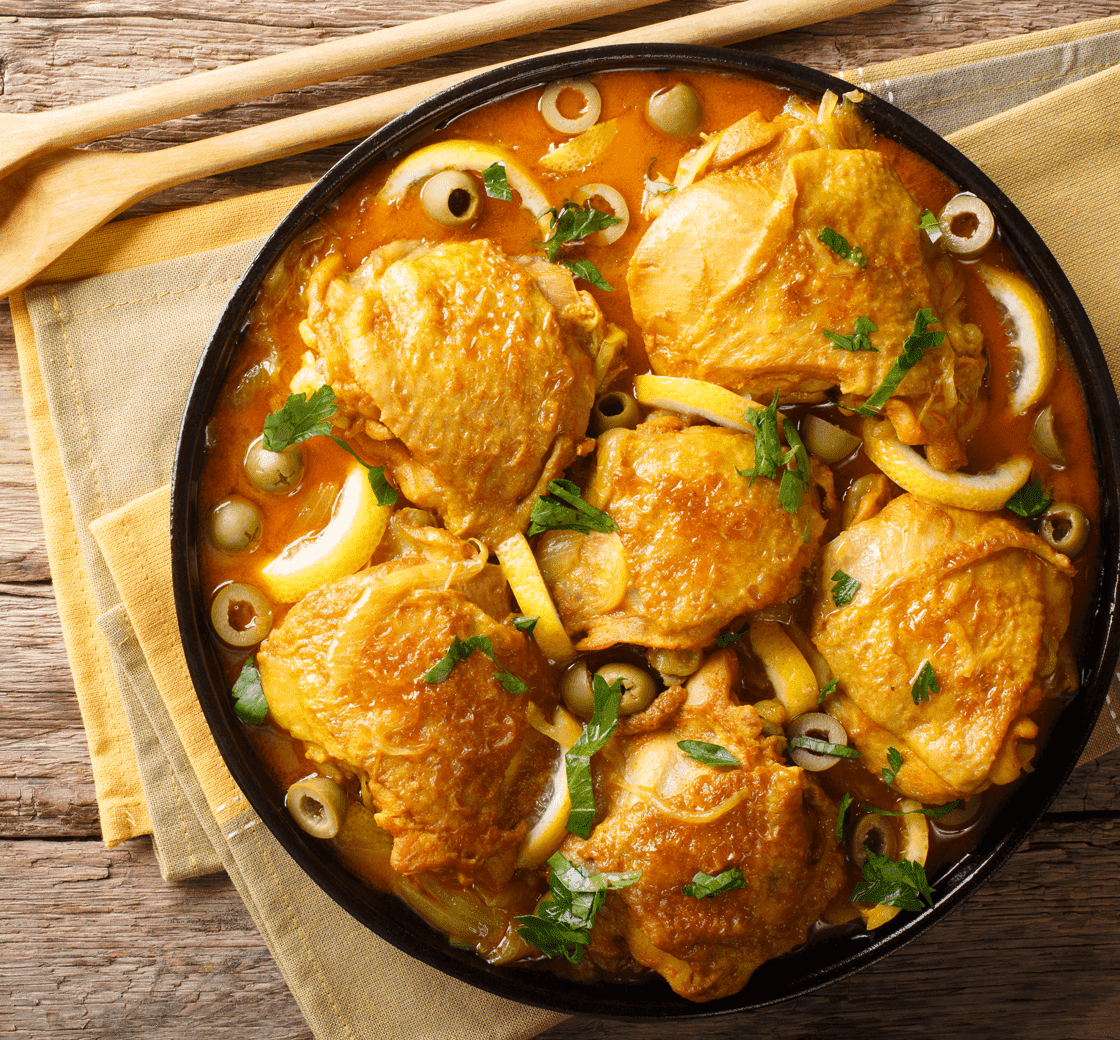
The history, culture and geography of Morocco are all richly evocative. It is easy to imagine yourself sipping mint tea while sitting on a terrace in Casablanca or Marrakech, or hiking the Atlas Mountains. The cuisine of Morocco reflects its Berber, Mediterranean, African and European influences, with a generous use of powerful spices. In this class, you will make some of the most acclaimed dishes of the Moroccan repertoire, including: grilled kefta (lamb) kebabs; chicken tagine with preserved lemons and olives; sweet spiced couscous; carrot salad with lemon-herb dressing and harissa.

You will work in teams to execute the class menu. At the end of class, participants gather to enjoy the food they have prepared. Wine is served with meals in most classes. All class menus are subject to change. While a snack platter is offered in both morning and evening classes, you may want to consider a light snack before joining us for class. Students are encouraged to bring a light lunch or dinner to all pastry classes.

You will work in teams to execute the class menu. At the end of class, participants gather to enjoy the food they have prepared. Wine is served with meals in most classes. All class menus are subject to change. While a snack platter is offered in both morning and evening classes, you may want to consider a light snack before joining us for class. Students are encouraged to bring a light lunch or dinner to all pastry classes.
Combine light, flaky crust and seasonal summer fruit fillings to wow any crowd! ICE pastry chefs will give you all the secrets for making a perfect pie crust, teaching you the same techniques and tips used by ICE career pastry grads at New York's top restaurants. Working in teams of two, you'll make two 6-inch pies from scratch. Choose from: strawberry rhubarb crumble; peach pie with almond crumble; blueberry lattice; and cherry lattice.
Enjoy Spain right here in New York as you feast on tapas --- one of the great pleasures of Spanish culture. You'll make merry with these classic and contemporary small plates featuring all the flavors of the Mediterranean. After we cook, the party begins. We'll enjoy: pan con tomate with salt-cured anchovies; patatas bravas with aioli and chives; jamón croquetas; gambas al ajillo; and red wine sangria.
Step down from the barstool — and go behind the bar instead! This Mixology 101 class teaches the foundational cocktail-making skills and techniques used by professional bartenders. (Much like “knife skills” is the first course taken by aspiring culinarians, Mixology 101 is the first building block toward more comprehensive cocktail knowledge.) This class covers: highball, old fashioned, martini, daiquiri , sidecar/daisy, and flips
While paella may be Spain's most well-known dish, the country has so much more to explore. It’s a culinary dream-spot for trying new flavors and combinations of ingredients. This class will help you discover new favorites, including stuffed piquillo peppers; pan con tomate; grilled shrimp with Romesco sauce; pork marinated in pomegranate and a watercress salad.
Ranked as America’s Best Culinary School (USAToday 2019), our roster of Chef-Instructors have run top kitchens around the globe.
| (Separate multiple addresses with commas like: john@aol.com, jane@aol.com) | |